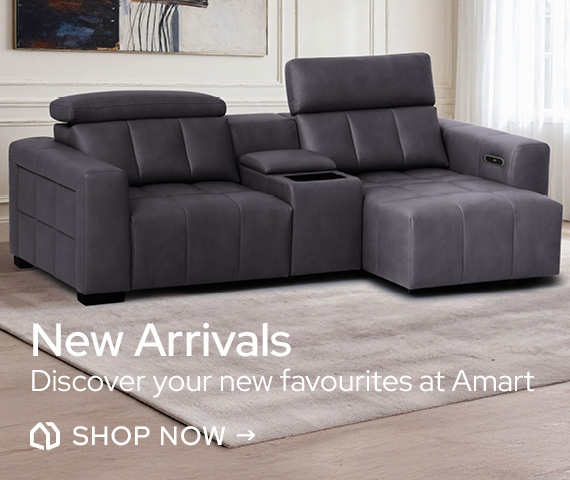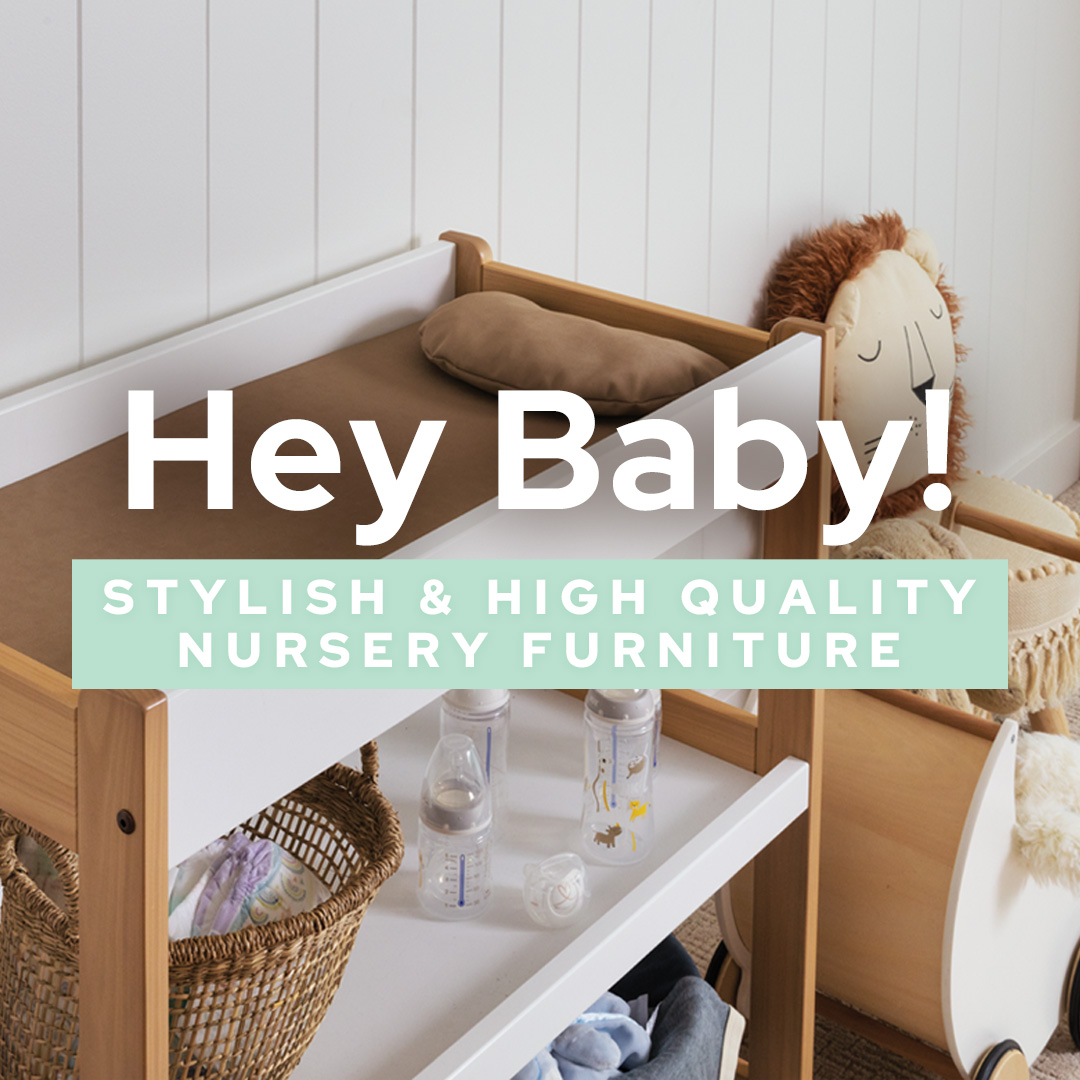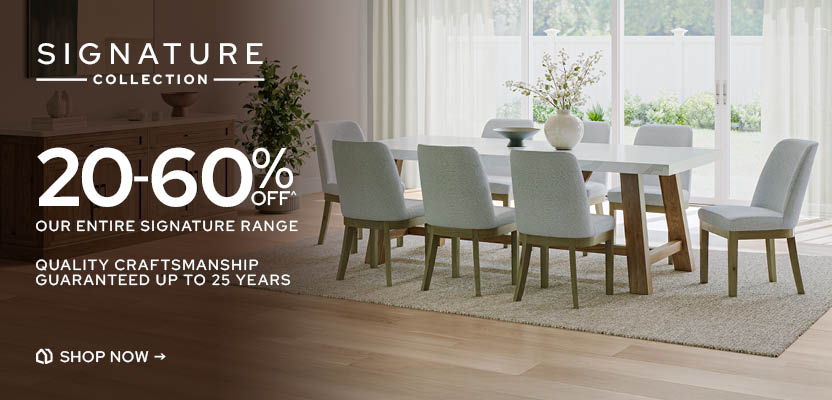Aluminium
To ensure the longevity and maintain the appearance of your aluminium outdoor furniture, please follow these care instructions:
- Usage and Storage: This item is designed for outdoor use, but, like all man-made materials, it can suffer damage if left exposed to the elements. To extend its life, avoid prolonged exposure to weather conditions. Store the furniture indoors or under cover when not in use or use an outdoor cover (do not store on grass).
- Avoid Excess Moisture: DO NOT allow the furniture to remain wet or sit in standing water for long periods. Wipe the furniture dry immediately if it becomes wet. Excess moisture can cause corrosion.
- Avoid exposure to chlorine & salt water: Chlorine/salt can disrupt the protective oxide layer on aluminium, leading to accelerated corrosion. This is particularly problematic in environments with high chlorine concentrations, such as in swimming pools, homes within a short distance of the ocean or areas with heavy chlorination.
- Cleaning:Clean your furniture with care. Avoid using harsh solvents, abrasives, or chemicals. To remove dirt and grime, rinse with fresh water and dry thoroughly. For a deeper clean, use a sponge and a mild detergent solution as needed. Abrasive cleaners will scratch/damage the surface.
Professional Cleaning: It's recommended to have your leather lounge professionally cleaned at least once or twice a year, depending on its usage. Professional cleaners have the expertise and specialized equipment to deep clean and condition the leather, removing any embedded dirt and restoring its original lustre.
Cushions
To keep your outdoor cushions looking their best and ensure they last, please follow these simple care instructions:
- Sun Exposure: Direct sunlight can cause rapid fading of the fabric. For best results, avoid exposing the cushions to direct sunlight.
- Weather Protection: To prolong the life of your cushions, do not leave them permanently exposed to weather conditions. Leaving cushions exposed puts the product at risk of mould and mildew growth. Store them indoors or under cover when not in use.
- Cleaning: Spot clean using a mild detergent and a damp cloth. After cleaning, dry the cushions by laying them flat in a shaded area to prevent any potential damage.
- Handling:
- Do not unzip the cushion covers.
- Do not remove the cushions from their covers.
- Do not put in the washing machine.
- Do not tumble dry.
- Do not bleach.
- Do not dry clean.
By following these simple steps, you will help keep your furniture in great condition and ensure it remains a beautiful and functional part of your outdoor space.
Glass
To ensure the safety and longevity of your glass furniture, please follow these important care instructions:
- Usage and Storage: This item is designed for outdoor use, but, like all man-made materials, it can suffer damage if left exposed to the elements. To extend its life, avoid prolonged exposure to weather conditions. Store the furniture indoors or under cover when not in use or use an outdoor cover.
- Inspect Upon Delivery: If you notice that the glass is chipped or broken upon delivery, stop using the product immediately and contact Amart for assistance.
- Inspect regularly: If you notice that the glass is chipped or broken over its lifespan, stop using the product immediately as this may result in a sudden and premature cracking of the surface.
- Avoid Impact: Do not drop, drag, or strike the glass surface. Handle with care to avoid any damage.
- Safe Usage: Do not sit or stand on the glass surface. It is designed for use as a tabletop and is not designed to support weight.
- Temperature Precautions: Avoid placing very hot or very cold items directly on the glass. Use at least 6mm thick table mats or protective pads to prevent extreme temperatures from coming into direct contact with the glass.
- Scratches: Do not use the glass surface as a chopping board or allow it to come into contact with sharp or abrasive objects as this can cause scratches.
- Cleaning: Clean your furniture with care. Avoid using harsh solvents, abrasives, or chemicals. To remove dirt and grime, rinse with fresh water and dry thoroughly. For a deeper clean, use a sponge and a mild detergent solution as needed. Abrasive cleaners will scratch/damage the surface.
Exploding glass
"Exploding glass" refers to the phenomenon where glass suddenly shatters or breaks apart, often with a lot of force or in a dramatic fashion. There are several causes for this issue:
- Thermal Stress : Glass can break due to rapid changes in temperature. For example, if a hot object is placed on a cold glass surface, or if the glass is exposed to extreme heat or cold, it can expand or contract unevenly, causing it to crack or shatter.
- Impact Damage: Dropping or striking glass with a hard object can cause it to crack or break. Even a small impact can lead to a chain reaction of fractures, making the glass appear to "explode."
- Chemical Reactions: Some types of glass can be sensitive to certain chemicals. Exposure to harsh chemicals or cleaning agents might weaken the glass over time, leading to sudden breakage.
If glass "explodes" or shatters, it is important to handle the situation carefully to avoid injury. Broken glass should be cleaned up promptly.
When choosing protective matting for your tabletop, consider the below:
- Material: Choose placemats made from materials that offer good insulation against heat, such as silicone, cork, or thick fabric. The thickness of this material should be a minimum of 6mm. These materials are effective at absorbing and diffusing heat.
- Coverage: Ensure that the placemat is large enough to cover the area where hot items will be placed. It should completely cover the base of pots, pans, or other hot items to provide adequate protection.
- Heat Resistance: Verify that the placemat is designed to handle high temperatures. Some placemats are specifically rated for heat resistance and can withstand higher temperatures without damage.
By following these simple steps, you will help keep your furniture in great condition and ensure it remains a beautiful and functional part of your outdoor space.
Galvanised Steel
To ensure the longevity and maintain the appearance of your steel outdoor furniture, please follow these care instructions:
- Usage and Storage: Galvanised steel is designed for short term outdoor use due to its protective zinc coating, but, like all man-made materials, it can suffer damage if left exposed to the elements. To extend its life, avoid prolonged exposure to weather conditions. Store the furniture indoors or under cover when not in use or use an outdoor cover (do not store on grass).
- Avoid Excess Moisture: DO NOT allow the furniture to remain wet or sit in standing water for long periods. Wipe the furniture dry immediately if it becomes wet. Excess moisture can compromise the protective coating and lead to rust formation.
- Avoid exposure to chlorine & salt water: Chlorine/salt can disrupt the protective zinc oxide layer on steel, leading to accelerated corrosion. Once the protective layer is compromised it more susceptible to rust. This is particularly problematic in environments with high chlorine concentrations, such as in swimming pools, homes within a short distance of the ocean or areas with heavy chlorination.
- Cleaning: Clean your furniture with care. Avoid using harsh solvents, abrasives, or chemicals. To remove dirt and grime, rinse with fresh water and dry thoroughly. For a deeper clean, use a sponge and a mild detergent solution as needed. Abrasive cleaners will scratch/damage the surface.
Live by the beach? Due to a process called “aerosolisation”, sea water is broken up into tiny droplets by the wind and waves and salt particles are released into the air. This process accelerates the corrosion of metal surfaces over time. It is essential to use furniture covers when the product is not in use and clean your product more frequently.
By following these simple steps, you will help keep your furniture in great condition and ensure it remains a beautiful and functional part of your outdoor space.
Outdoor Timber
To ensure the longevity and maintain the appearance of your outdoor timber furniture, please follow these care instructions:
- Usage and Storage: This furniture is designed for outdoor use, but prolonged exposure to harsh weather conditions can affect its integrity and appearance. To extend its life, avoid leaving the furniture exposed during extreme weather. Store it indoors or under cover when not in use or use a high-quality outdoor cover (do not store on grass).
- Moisture Management: Timber can be susceptible to moisture damage, including warping and mould growth. Avoid allowing the furniture to remain wet for long periods. Wipe off any spills immediately, and if the furniture becomes wet from rain, allow it to dry completely before covering it.
- Protection from the Elements: Different timbers have varying levels of natural resistance to the elements:
- Acacia: While naturally durable, acacia benefits from periodic oiling to maintain its colour and to protect it against moisture and UV damage. It is recommended to oil acacia every 6-12 months.
- Teak: Known for its natural oils, teak is highly resistant to water. For optimal care and to prevent it from weathering to a grey colour, apply teak oil every 6-12 months.
- Karri Gum: This hardwood is robust but should be treated with a wood protector or sealer to enhance its durability and maintain its colour. Treatment intervals are dependent on exposure frequency however it is recommended this is applied every 6-12 months.
- Eucalyptus: While naturally strong and durable, eucalyptus requires periodic oiling to maintain its colour and to protect it against moisture and UV damage. It is recommended to oil eucalyptus every 6-12 months.
- Avoid Exposure to Chlorine & Salt Water:Chlorinated and saltwater environments can accelerate deterioration of timber. If your furniture is near a pool or coastal area, clean it more frequently and use protective covers when not in use.
- Cleaning: Clean your furniture with care. Avoid using harsh solvents, abrasives, or chemicals. To remove dirt and grime, rinse with fresh water and dry thoroughly. For a deeper clean, use a sponge and a mild detergent solution as needed. Abrasive cleaners will scratch/damage the surface.
Timber expands and contracts with fluctuations in temperature and humidity. This will result in minor cracking but will not compromise the structural integrity of the product. By following the simple steps above, you will help prevent this cracking as well as keep your timber furniture in great condition, ensuring it remains a beautiful and functional part of your outdoor space.
Weathergrain
To ensure the longevity and maintain the appearance of your outdoor furniture, please follow these care instructions:
- Usage and Storage: This furniture is designed for outdoor use; however, prolonged exposure to extreme weather conditions can affect its integrity and cause fading and brittleness over time. To extend its life, store the furniture indoors or under cover when not in use, or use a high-quality outdoor cover.
- Avoid Heavy or Pointed Objects: Do not place heavy or pointed objects on the surface, as this can lead to dents or scratches. Additionally, avoid placing magnifying objects such as wine glasses, reading glasses, or other glass items on the furniture, as they can focus sunlight and potentially burn the surface.
- Heat Protection: Avoid placing hot objects directly on the furniture, as high temperatures can weaken the material and lead to brittleness. Always use heat-resistant pads under hot items.
- Cleaning: Clean your furniture with care. Avoid using harsh solvents, abrasives, or chemicals. To remove dirt and grime, rinse with fresh water and dry thoroughly. For a deeper clean, use a sponge and a mild detergent solution as needed. Abrasive cleaners will scratch/damage the surface.
By following these simple steps, you will help keep your furniture in great condition, ensuring it remains a beautiful and functional part of your outdoor space.
Wicker
Wicker is a weaving technique used to create outdoor furniture, baskets, and decorative items. It involves weaving thin, flexible strands of materials like rattan, bamboo, or synthetic materials to form intricate patterns.
To ensure the longevity and maintain the appearance of your outdoor furniture, please follow these care instructions:
- Usage and Storage: This item is designed for outdoor use, but, like all man-made materials, it can suffer damage if left exposed to the elements. To extend its life, avoid prolonged exposure to weather conditions. Store the furniture indoors/under cover when not in use and use an outdoor cover (do not store on grass).
- Sun Exposure: Prolonged exposure to sunlight can cause wicker to dry out and become brittle, leading to cracks and potential unravelling of the weave. Sun exposure can also cause fading. To protect your furniture from UV damage, we recommend using a furniture cover when not in use, even when stored undercover or under an awning.
- Moisture Management: While wicker is made from weather-resistant materials, prolonged exposure to moisture can still lead to mould or mildew. If the furniture gets wet, dry it thoroughly to prevent moisture buildup.
- Cleaning: Regular cleaning is essential to maintain the appearance of your wicker furniture. Use a soft brush or vacuum with a brush attachment to remove dust and debris. For deeper cleaning, mix mild soap with warm water and gently scrub the surface with a cloth or sponge. Rinse thoroughly and dry immediately.
By following these care instructions, you can help ensure your outdoor wicker furniture remains attractive and functional for many seasons to come.
PVC Coated Polyester
To ensure the longevity and maintain the appearance of your outdoor furniture, please follow these care instructions:
- Usage and Storage:This material is designed for outdoor use, but prolonged exposure to harsh weather conditions can affect its durability. Store the furniture indoors or under a protective cover when not in use.
- Moisture Management: While PVC Polyester is resistant to moisture, it’s important to avoid allowing water to pool on the surface for extended periods. Wipe away any excess water to prevent mildew growth.
- UV Protection: The UV stabilisation helps prevent fading, but prolonged exposure to intense sunlight can still cause some discolouration/yellowing over time. To minimise UV damage, consider using a furniture cover or positioning the furniture in shaded areas when not in use.
- Chlorine and Saltwater Considerations: Exposure to chlorine from swimming pools and saltwater from coastal environments can lead to discolouration/yellowing and deterioration of the material. If your furniture is near a pool or ocean, rinse it regularly with fresh water to remove chlorine or salt residues and dry immediately.
- Cleaning: Clean your furniture with care. Avoid using harsh solvents, abrasives, or chemicals. To remove dirt and grime, rinse with fresh water and dry thoroughly. For a deeper clean, use a sponge and a mild detergent solution as needed. Abrasive cleaners will scratch/damage the surface.
By following these care instructions, you can help ensure your outdoor furniture remains attractive and functional for many seasons to come.













